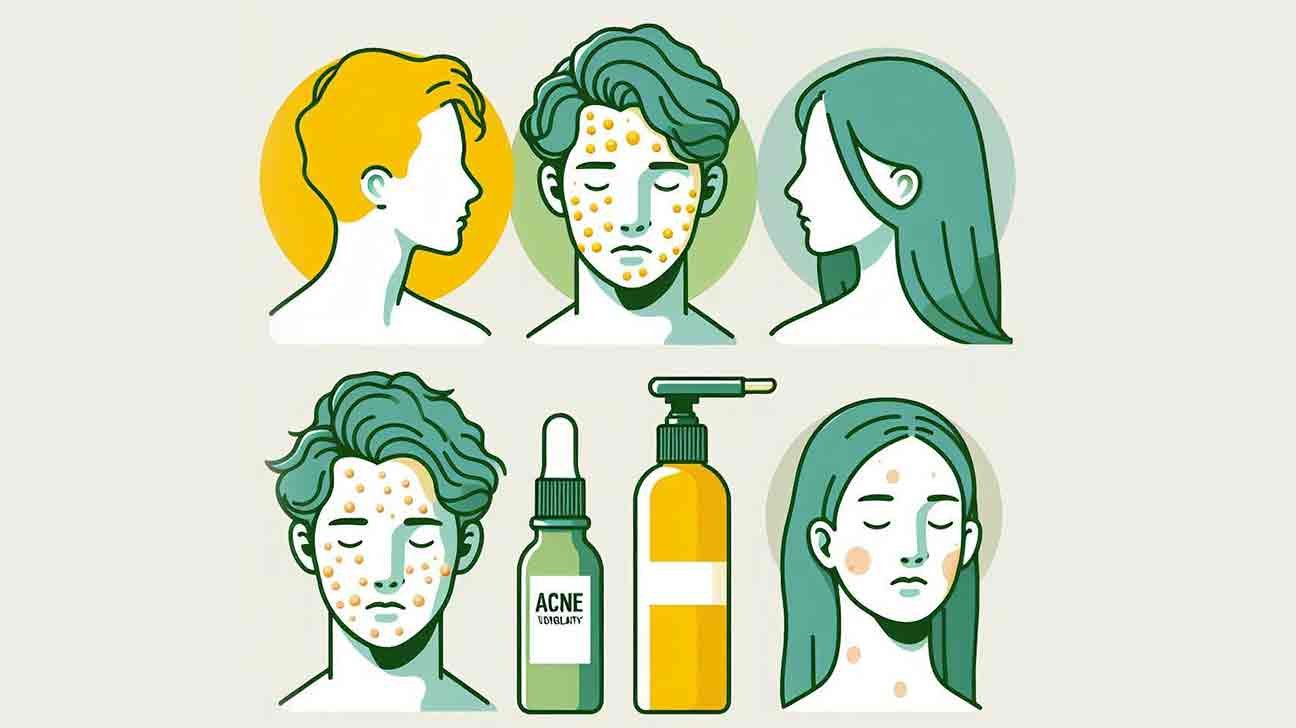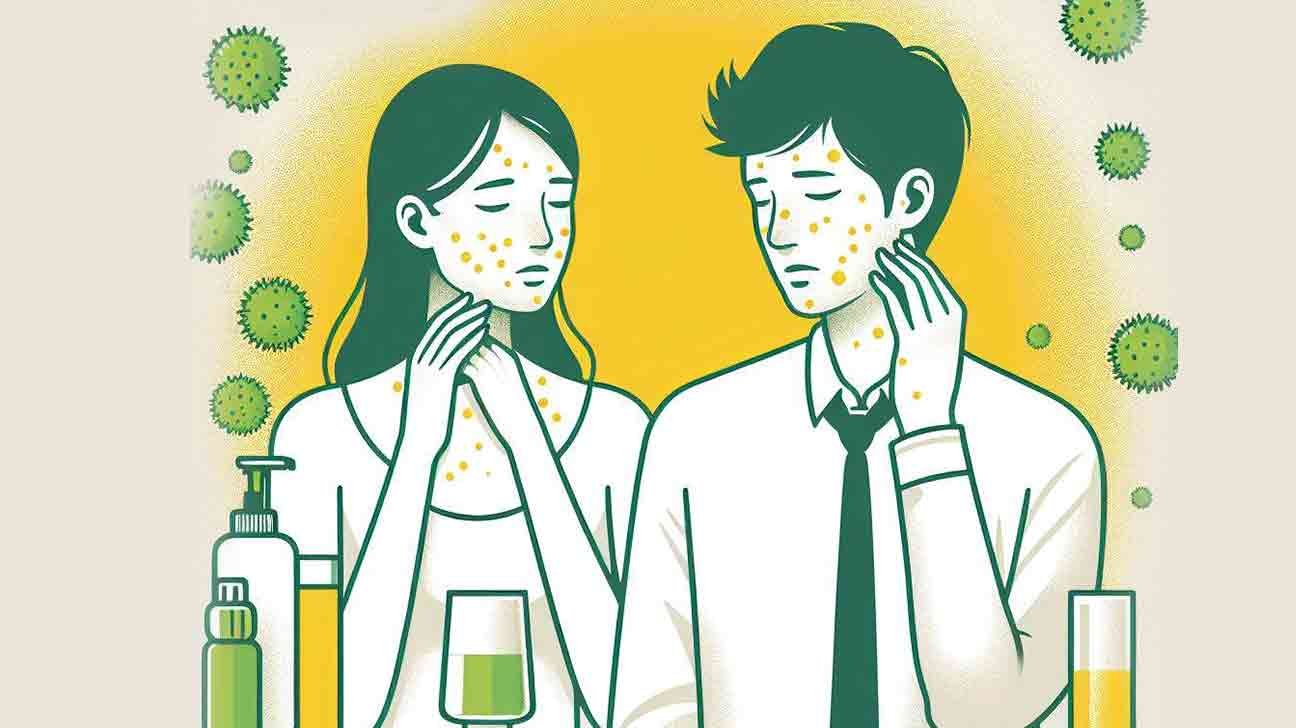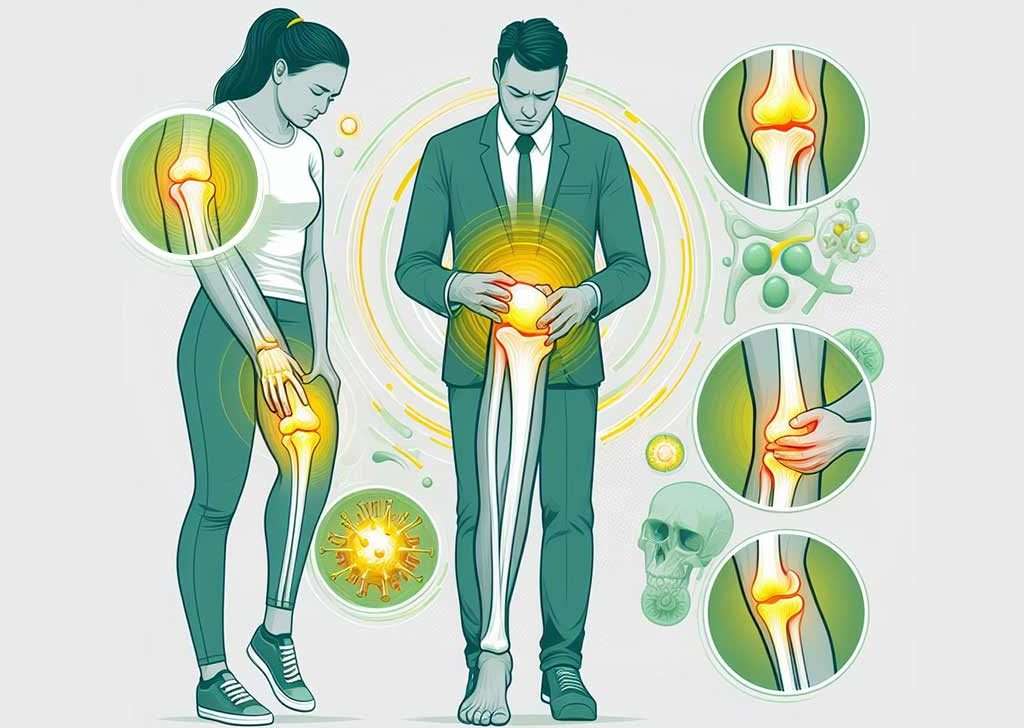Acne vulgaris is one of the most common skin conditions worldwide, affecting individuals of various ages and backgrounds. Despite its prevalence, numerous myths and misconceptions surround its causes, treatments, and implications. Understanding the truth behind these misconceptions is crucial for effective management and reducing the stigma associated with acne. Additionally, for medical professionals, accurately classifying acne vulgaris using the ICD-10 code is essential for diagnosis and treatment planning.
ICD-10 Classification:
- Code: L70.0 – Acne vulgaris
- Proper use of this code ensures accurate medical records and facilitates appropriate treatment strategies.
Here are seven common misconceptions about Acne Vulgaris:
1. Only Teenagers Get Acne
Misconception: Acne is exclusively a teenage problem, disappearing once puberty is over.
Reality: While adolescence is a peak period for acne due to hormonal fluctuations, acne can affect individuals well into their 20s, 30s, and beyond. Adult acne can be triggered by various factors, including stress, hormonal imbalances, certain medications, and lifestyle choices.
2. Poor Hygiene Causes Acne
Misconception: Not maintaining proper skin hygiene leads to acne outbreaks.
Reality: Acne primarily results from hormonal changes, excess oil production, clogged pores, and bacteria. While poor hygiene can exacerbate skin issues, over-washing or using harsh cleansers can irritate the skin and worsen acne. Maintaining a balanced skincare routine is key.
3. Eating Greasy Foods and Chocolate Causes Acne
Misconception: Consuming oily foods like pizza, burgers, and chocolate directly causes acne.
Reality: Diet plays a role in overall skin health, but there’s limited evidence linking greasy foods or chocolate directly to acne. Some studies suggest that high-glycemic diets and dairy products may influence acne in certain individuals. It’s essential to identify personal dietary triggers rather than avoiding specific foods indiscriminately.
4. Sun Exposure Improves Acne
Misconception: Sunbathing or using tanning beds can help clear up acne.
Reality: While sunlight may temporarily dry out the skin and reduce oiliness, excessive sun exposure can lead to skin damage, increased oil production, and worsening of acne in the long run. Additionally, many acne medications increase skin sensitivity to the sun, raising the risk of sunburn.
5. Popping Pimples Helps Them Heal Faster
Misconception: Squeezing or popping pimples can speed up the healing process.
Reality: Popping pimples can introduce more bacteria into the skin, leading to infections, increased inflammation, and potential scarring. It’s best to let pimples heal naturally or seek professional extraction from a dermatologist.
6. Only the Face is Affected by Acne
Misconception: Acne is limited to facial areas like the forehead, cheeks, and jawline.
Reality: Acne can develop on various parts of the body that have sebaceous (oil) glands, including the back, chest, shoulders, and even the neck. Body acne is common and can be influenced by factors similar to facial acne.
7. Over-the-Counter (OTC) Treatments Always Work
Misconception: All acne treatments available without a prescription are effective for everyone.
Reality: OTC treatments, typically containing ingredients like benzoyl peroxide or salicylic acid, can be effective for mild to moderate acne. However, more severe cases may require prescription medications such as topical retinoids, antibiotics, or hormonal therapies. Consulting a dermatologist ensures tailored and effective treatment plans.
Conclusion
Understanding the realities behind these misconceptions is vital for anyone dealing with Acne Vulgaris. Dispelling myths helps in seeking appropriate treatments, reducing stigma, and promoting healthier skin management practices. If you’re struggling with acne, consider consulting a dermatologist to explore effective treatment options tailored to your specific needs.
Medical Classification Reminder: For healthcare providers, remember that Acne vulgaris is classified under ICD-10 code L70.0. Accurate coding is essential for effective patient management and insurance purposes.
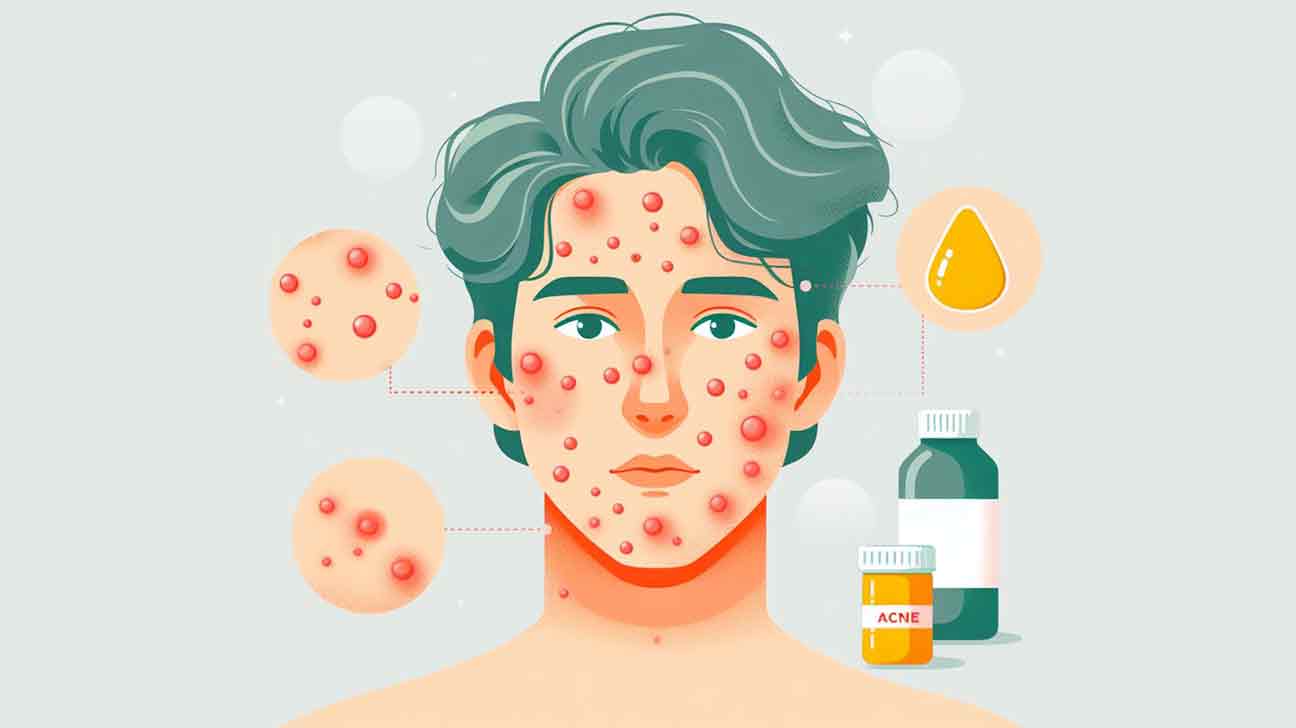
Acne Vulgaris ICD-10 code is L70.0, which refers to the inflammation of oil glands and hair glands resulting in pimples. Acne vulgaris is a common skin disease typically affecting adolescents on the face and upper trunk.
It encompasses comedones, papules, pustules, nodules, and cysts caused by pilosebaceous unit inflammation and obstruction. Acne vulgaris, while less severe than cystic acne or nodular acne, can still be distressing for those affected. The condition often requires proper treatment and prevention measures to manage breakouts effectively and maintain clear skin.
Consulting a dermatologist for personalized care and guidance is beneficial for individuals dealing with acne vulgaris.
What Is Acne Vulgaris?
Acne Vulgaris, coded as L70. 0 in ICD 10, is a skin condition characterized by comedones, papules, pustules, nodules, and cysts, resulting from blockage and inflammation of hair follicles and sebaceous glands. It commonly affects teenagers on the face and upper trunk.
Defining Acne Vulgaris
Acne Vulgaris, commonly known as acne, is a skin condition characterized by the formation of comedones, papules, pustules, nodules, and/or cysts. It occurs due to the obstruction and inflammation of pilosebaceous units, which are hair follicles and their accompanying sebaceous glands.
Prevalence And Impact
Acne Vulgaris is a widespread skin disorder that affects a significant portion of the population. Its prevalence is particularly high among teenagers and young adults. Studies indicate that approximately 85% of individuals aged between 12 and 24 experience acne at some point in their lives.
This skin condition can have a profound impact on both physical and psychological well-being. The visible nature of acne often leads to self-consciousness, low self-esteem, and social withdrawal, especially in adolescents who are already navigating the challenges of adolescence. The impact of acne extends beyond its physical manifestations, affecting mental health, relationships, and overall quality of life.
It is important to address acne vulgaris promptly and effectively, considering its potential long-term impact on an individual’s self-image and emotional well-being.
Acne Vulgaris is more than just a mere skin issue. Understanding its definition and recognizing its prevalence is crucial in order to develop effective treatments and support systems to alleviate its impact on individuals’ lives.
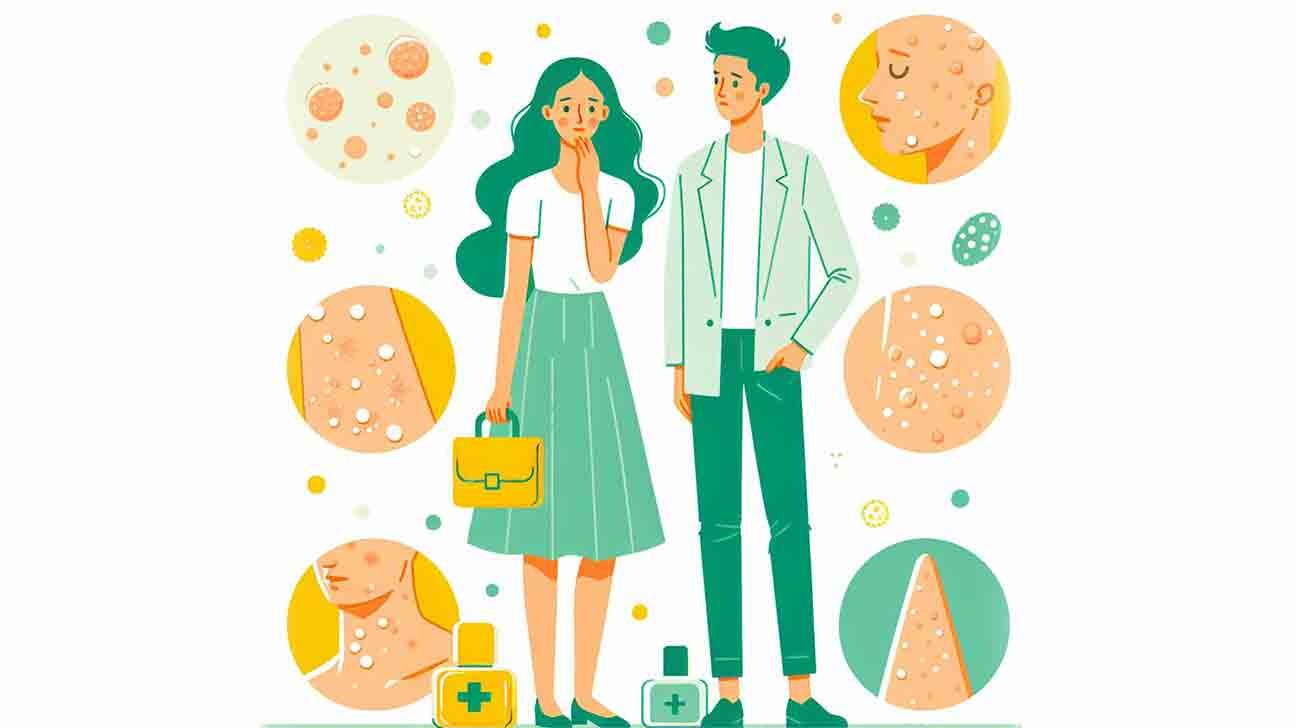
Understanding Icdc-10
Acne vulgaris, also known as acne. it is a common skin condition characterized by the formation of comedones, papules, pustules, nodules, and cysts. It primarily affects the face and upper trunk and is most common among adolescents. Understand the ICDC-10 coding for acne vulgaris to properly identify and treat this condition.
What Is Icdc-10?
ICD-10 is stands for International Classification of Diseases, 10th Revision, is a medical classification system created by the World Health Organization (WHO) to standardize disease and health conditions for global epidemiological monitoring, research, and clinical purposes. It serves as a universal language for categorizing and coding diseases, disorders, injuries, and other health-related conditions.
Importance Of Icdc-10 In Medical Classification
The ICDC-10 coding system is crucial in healthcare for several reasons. Firstly, it provides a standardized method for recording, reporting, and analyzing health information. This standardization facilitates the comparison of data across different countries and healthcare settings, enabling accurate epidemiological assessments and healthcare resource allocation.
Furthermore, ICDC-10 supports the advancement of medical knowledge and research by allowing for the systematic classification of diseases and conditions. It aids in the identification of trends, patterns, and risk factors associated with specific ailments, which in turn contributes to the development of effective treatment protocols and preventive measures.
Acne Vulgaris Icdc-10 Coding
Acne Vulgaris is a common skin condition, and accurate coding is crucial for proper classification and treatment. Understanding the ICDC-10 coding for Acne Vulgaris helps medical professionals and coders appropriately identify and record instances of this condition.
Icdc-10 Code For Acne Vulgaris
The specific ICDC-10 code for Acne Vulgaris is L70.0. ICDC-10 code is used to classify and document cases of Acne Vulgaris in medical records and billing systems. Proper use of this code ensures accurate tracking and treatment of the condition.
Icdc-10 Coding Guidelines For Acne Vulgaris
When assigning the ICDC-10 code for Acne Vulgaris, it’s important to adhere to the coding guidelines set forth by the World Health Organization (WHO). These guidelines provide detailed instructions on accurately documenting and categorizing cases of Acne Vulgaris, ensuring consistency and accuracy in medical coding.
Icdc-10 Code Categories
When it comes to classifying medical conditions, the International Classification of Diseases (ICD) plays a significant role. The ICD-10 is the tenth revision of this classification system and provides specific codes for various diseases and disorders, including Acne Vulgaris. These codes are essential for accurate medical coding, insurance claims, and statistical analysis. In the case of Acne Vulgaris, the ICD-10 provides different code categories that help categorize and identify the severity and type of acne.
Category L70: Acne
The first code category under the ICD-10 for Acne Vulgaris is Category L70, which specifically focuses on acne. Acne is a common skin condition that affects millions of people worldwide. It is characterized by the formation of comedones, papules, pustules, nodules, and/or cysts due to the obstruction and inflammation of oil glands and hair follicles.
The different codes under Category L70 help differentiate the severity and location of acne, providing healthcare professionals with a standardized way to classify and document the condition. These codes help in accurate diagnosis, treatment planning, and monitoring the effectiveness of various acne treatments.
Category L71: Rosacea
Another code category under the ICD-10 that is related to Acne Vulgaris is Category L71, which focuses on Rosacea. Rosacea is a chronic skin condition that primarily affects the face and is characterized by flushing, persistent redness, and the formation of pimples and visible blood vessels.
Although rosacea and acne vulgaris may have some similar symptoms, they are distinct conditions. The inclusion of a separate category for Rosacea in the ICD-10 emphasizes the importance of differentiating between these two conditions for accurate diagnosis and treatment.
By accurately assigning the appropriate ICD-10 codes from categories L70 and L71, healthcare professionals can communicate effectively, ensure proper documentation, and provide better patient care.
How To Use And Implement Icdc-10 For Acne Vulgaris
ICD-10 for acne vulgaris provides a systematic way to code and classify acne symptoms, enabling healthcare providers to accurately document and track the condition. Implementing ICD-10 for acne vulgaris involves understanding the specific codes for different types and stages of acne, such as comedones, papules, pustules, nodules, and cysts, ensuring accurate diagnosis and treatment tracking.
Icdc-10 Coding Process
When diagnosing acne vulgaris, proper ICDC-10 coding is essential for accurate medical records.
Follow these steps for effective implementation:
- Identify the specific type and severity of acne vulgaris.
- Refer to the ICDC-10 code L70.0 for acne vulgaris diagnosis.
- Ensure detailed documentation of the patient’s condition for precise coding.
Benefits Of Accurate Icdc-10 Coding
Accurate ICDC-10 coding for acne vulgaris offers several advantages:
- Enhanced Treatment: Enables healthcare providers to tailor treatment plans.
- Efficient Record Keeping: Facilitates organized and thorough patient records.
- Improved Billing: Ensures correct billing and reimbursement processes.
Common Mistakes And Challenges In Icdc-10 Coding For Acne Vulgaris
ICD-10 coding for acne vulgaris presents its own set of challenges and common mistakes that medical coders often encounter. It’s imperative to address these issues to ensure accurate coding and proper documentation. Let’s delve into the frequent blunders and difficulties in ICDC-10 coding for acne vulgaris.
Incorrect Code Selection
One common mistake in coding for acne vulgaris is the incorrect selection of ICD-10 codes. This could stem from a lack of understanding of the different types and severity of acne, leading to misclassification and inaccurate coding. It’s crucial to accurately identify and select the appropriate ICD-10 code to reflect the specific type and severity of acne vulgaris.
Documentation Challenges
Effective documentation is paramount for precise ICD-10 coding of acne vulgaris. However, documentation challenges often arise, such as incomplete or unclear records that hinder accurate code assignment. Incomplete documentation may fail to capture the full clinical picture, resulting in potentially incorrect coding. Physicians and coders must collaborate to ensure comprehensive and detailed documentation to accurately reflect the patient’s condition.
Icdc-10 Code Examples For Acne Vulgaris
Acne vulgaris is a common skin condition that affects millions of people worldwide. It is important for medical professionals to accurately code and document this condition for proper diagnosis and treatment. The International Classification of Diseases (ICD-10) provides specific codes to identify and differentiate the severity of acne vulgaris. These codes enable healthcare providers to accurately report and track cases of acne vulgaris for research, statistical analysis, and reimbursement purposes.
Mild Acne Vulgaris: L70.0
Acne vulgaris is categorized into various forms based on the severity and type of lesions. Mild acne vulgaris is characterized by the presence of comedones (blackheads and whiteheads) and a few papules (small, red bumps). The ICD-10 code for mild acne vulgaris is L70.0. This code helps healthcare providers accurately document and track cases of mild acne vulgaris in their patients.
Severe Acne Vulgaris: L70.5
Severe acne vulgaris is a more advanced form of the condition that involves the presence of multiple nodules (large, painful blemishes) and extensive inflammation. The ICD-10 code for severe acne vulgaris is L70.5. This specific code allows healthcare providers to accurately identify and document cases of severe acne vulgaris, ensuring proper diagnosis and treatment.
By using appropriate ICD-10 codes for acne vulgaris, healthcare providers can effectively communicate the severity and type of the condition, leading to better patient care and more accurate reporting. It is important for medical professionals to stay updated with the latest coding guidelines and accurately document cases of acne vulgaris using the appropriate ICD-10 codes.
Future Developments In Icdc-10 For Acne Vulgaris
Acne vulgaris is a common skin condition that affects individuals of all ages, causing distress and impacting quality of life. In the context of ICDC-10, the classification and coding system for diseases and health problems, future developments are aimed at refining the diagnosis and treatment of acne vulgaris. This evolving framework presents new opportunities for healthcare professionals to better understand and address this prevalent dermatological concern.
Icdc-11 Updates
The forthcoming ICDC-11 is anticipated to incorporate updated criteria and terminology for acne vulgaris diagnosis and classification. This revision aims to provide clearer guidelines for healthcare providers, enabling more accurate coding and documentation of this condition. By aligning with current scientific knowledge and clinical practices, ICDC-11 updates are poised to enhance the understanding and management of acne vulgaris.
Advancements In Acne Treatment And Classification
In addition to the ICDC-11 updates, advancements in acne treatment and classification are driving progress in the field. These developments include innovative therapies, such as targeted medications and advanced procedural interventions, designed to address the diverse presentations of acne vulgaris.refined classification systems are being explored to better categorize the varying severity and subtypes of acne, aiding in personalized treatment strategies tailored to individual patient needs.
Frequently Asked Questions On Acne Vulgaris Icd 10
What Is The Icd-10 Code For Acne Vulgaris Unspecified?
The ICD-10 code for acne vulgaris unspecified is L70. 9. This code signifies a skin disorder characterized by inflammation of oil glands and hair glands. Acne vulgaris can cause pimples and typically affects adolescents.
What Is Acne Vulgaris Vs Cystic Acne?
Nodular acne, another severe type, consists of deep, hard blemishes called nodules. Acne vulgaris refers to the formation of comedones, papules, pustules, nodules, and cysts due to inflammation and obstruction of hair follicles.
It commonly affects adolescents.
What Is The Icd-10 Code For L70 8?
The ICD-10 code for L70. 8 is “Acne, unspecified. It is a skin disorder marked by inflammation of oil and hair glands.
What Does Vulgaris Mean In Acne?
Acne vulgaris refers to common acne with various blemishes caused by blocked hair follicles and inflammation.
Conclusion
Acne vulgaris, a common skin condition, can cause frustration and self-consciousness for many individuals. It is essential to understand its different types, including cystic acne and nodular acne. These severe forms of acne consist of inflammation and painful blemishes. The development of comedones, papules, pustules, nodules, and cysts due to obstruction and inflammation of hair follicles and sebaceous glands defines acne vulgaris.
While it predominantly affects adolescents, anyone can be prone to this condition. With the right treatment and prevention measures, individuals can manage and ultimately overcome acne vulgaris.

